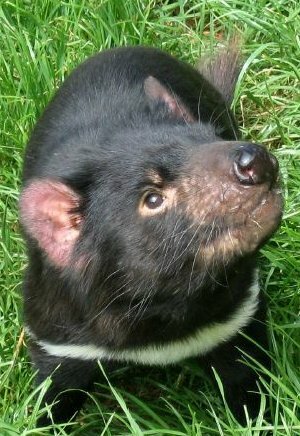Over at Your Genetic Genealogist, CeCe Moore talks about investigating evidence of low-level Ashkenazi Jewish descent in her 23andMe data. What I like about this story is how much digging CeCe did; after one tool threw up a “14% Ashkenazi” result, she looked for similar evidence in 23andMe’s tool. She then did the same analysis on her mother’s DNA, finding no apparant Ashkenazi heritage, and to top it all off got her paternal uncle genotyped, which showed even greater Ashkenazi similarity. [LJ]
 A paper out in PLoS Medicine looks at the interaction between genetics and physical activity in obesity. The take-home message is pretty well summarized in the figure to the left; genetic predispositions are less important in determining BMI for those who do frequency physical excercise than for those who remain inactive. This illustrates the importance of including non-genetic risk factors in disease prediction; not only because they are very important in their own right (the paper demonstrates that physical activity is about as predictive of BMI as known genetic factors), but also because information on environmental influences allows better calibration of genetic risk. [LJ]
A paper out in PLoS Medicine looks at the interaction between genetics and physical activity in obesity. The take-home message is pretty well summarized in the figure to the left; genetic predispositions are less important in determining BMI for those who do frequency physical excercise than for those who remain inactive. This illustrates the importance of including non-genetic risk factors in disease prediction; not only because they are very important in their own right (the paper demonstrates that physical activity is about as predictive of BMI as known genetic factors), but also because information on environmental influences allows better calibration of genetic risk. [LJ]
Trends in Genetics have published an opinion piece in their most recent issue outlining the types of genetic variants we might expect to see for common human diseases (defined by allele frequency and risk), and how exome and whole-genome sequencing could be used to find them. They give a brief, relatively jargon-free, overview of gene-mapping techniques that have been previously used, and discuss how sequencing can take this research further, particularly for the previously less tractable category of low-frequency variants that confer a moderate level of disease risk. [KIM]
More Sanger shout outs this week; Sanger Institute postdoc Liz Murchison, along with the rest of the Cancer Genome Project, have announced the sequencing of the Tasmanian Devil genome. The CGP is interested in the Tasmanian Devil due to a rare, odd and nasty facial cancer, which is passed from Devil to Devil by biting. In fact, all the tumours are descended from the tumour of one individual; 20 years or so on, and 80% of the Devil population has been wiped out by the disease. As well as a healthy genome, the team also sequenced two tumour genomes, in the hope of learning more about what mutations made the cells go tumours, and what makes the cancer so unique.
 I have to say, this isn’t going to be an easy job; assembling a high-quality reference genome of an under-studied organism is a lot of work, especially using Illumina’s short read technology, and identifying and making sense of tumour mutations is equally difficult. Add to this the fact that the tumour genome is from a different individual to the healthy individual, this all adds up to a project of unprecedented scope. On the other hand, the key to saving a species from extinction could rest on this sticky bioinformatics problem, and if anyone is in the position to deal with it, it’s the Cancer Genome Project. [LJ]
I have to say, this isn’t going to be an easy job; assembling a high-quality reference genome of an under-studied organism is a lot of work, especially using Illumina’s short read technology, and identifying and making sense of tumour mutations is equally difficult. Add to this the fact that the tumour genome is from a different individual to the healthy individual, this all adds up to a project of unprecedented scope. On the other hand, the key to saving a species from extinction could rest on this sticky bioinformatics problem, and if anyone is in the position to deal with it, it’s the Cancer Genome Project. [LJ]
Tasmanian Devil image from Wikimedia Commons.
 I have to say, this isn’t going to be an easy job; assembling a high-quality reference genome of an under-studied organism is a lot of work, especially using Illumina’s short read technology, and identifying and making sense of tumour mutations is equally difficult. Add to this the fact that the tumour genome is from a different individual to the healthy individual, this all adds up to a project of unprecedented scope. On the other hand, the key to saving a species from extinction could rest on this sticky bioinformatics problem, and if anyone is in the position to deal with it, it’s the Cancer Genome Project. [LJ]
I have to say, this isn’t going to be an easy job; assembling a high-quality reference genome of an under-studied organism is a lot of work, especially using Illumina’s short read technology, and identifying and making sense of tumour mutations is equally difficult. Add to this the fact that the tumour genome is from a different individual to the healthy individual, this all adds up to a project of unprecedented scope. On the other hand, the key to saving a species from extinction could rest on this sticky bioinformatics problem, and if anyone is in the position to deal with it, it’s the Cancer Genome Project. [LJ] RSS
RSS Twitter
Twitter
Recent Comments